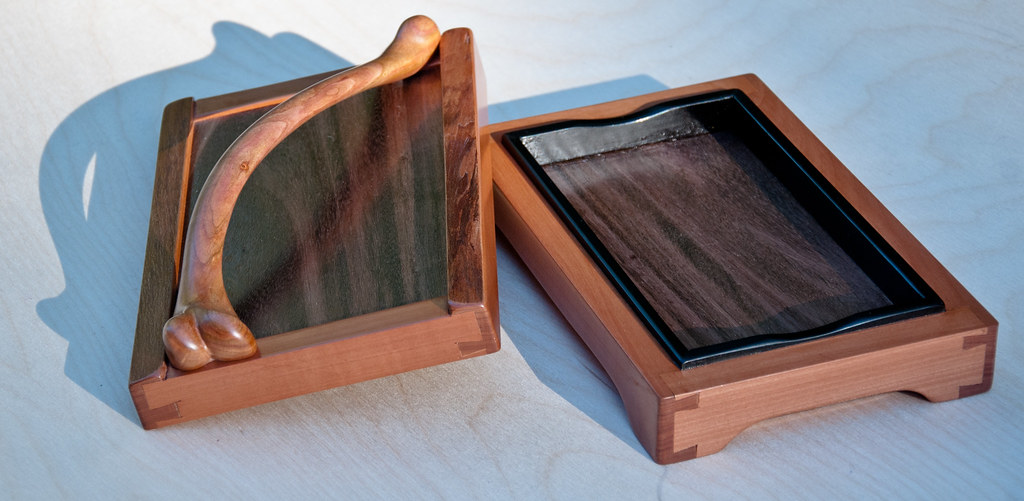I have a decent shop. My grandfather passed and left me with some things. The bug hit just before he passed and it was fortuitous. Boom I'm a woodworker (hobbyist)! Currently in the shop:
Craftsman TS 113xxx (good shape and a flat table, bigger motor added on and I'm actually happy with it. I'm not worried about the fence yet)
Two floor drill presses
Router Table
6" Walker Turner Jointer
12" Delta lunchbox
Grinding wheel
Hand Tools:
Adj. Mouth Low Ang. Block, Stanley 4 1/2, 5 1/4, 5, 8c, 80, and 47 (with 9 cutters! and everything else), also a newer stanley I've turned scrub
sharpening system (I'm good with this)
Stanley 750 bevel edge chisel set
Marples chisel set
Veritas 14 tpi dovetail saw, coping saw
a collection of tuned rip and cross diston, atkins, and warrented panel saws
marking guages, sliding squares, t-bevel,
I need a book/website/tutorial that lays out the steps to do fine boxwork with hand tools. I know I have a hybrid shop at my disposal but I would rather do it all old school.
Anybody have any advice or see anything I'm missing?




 Reply With Quote
Reply With Quote









